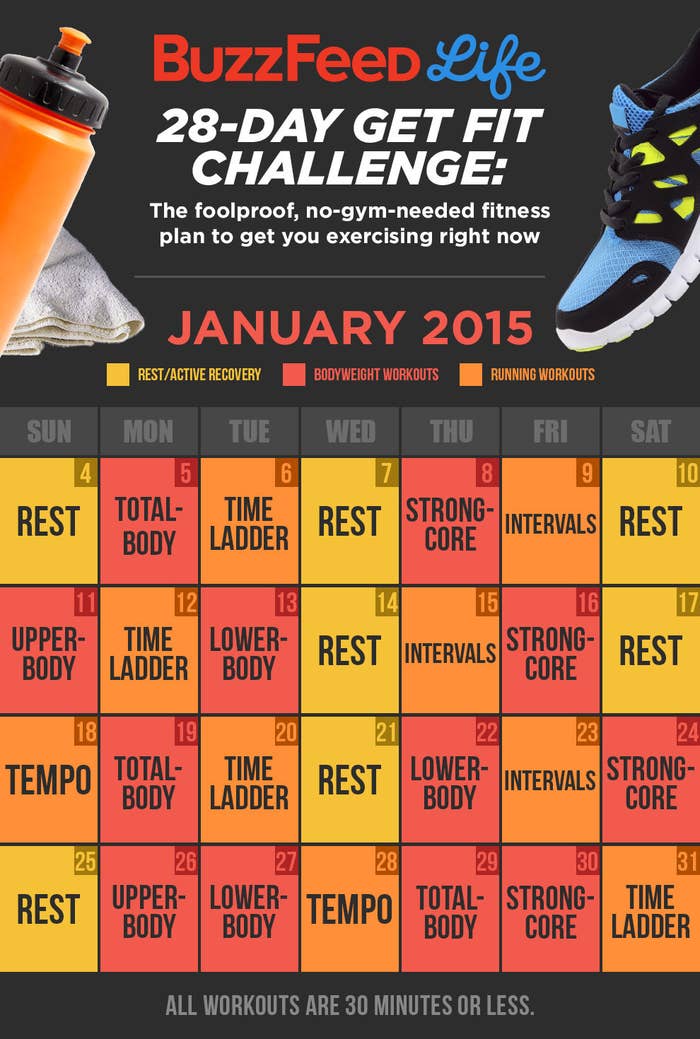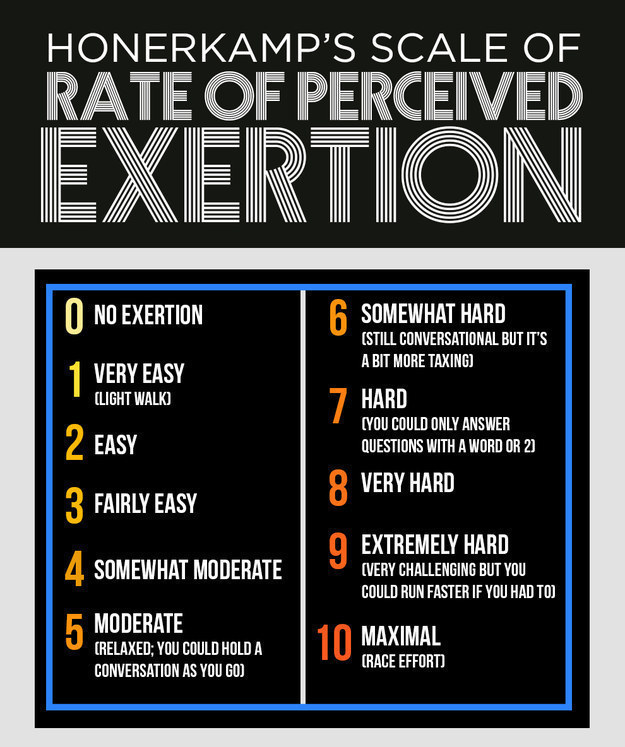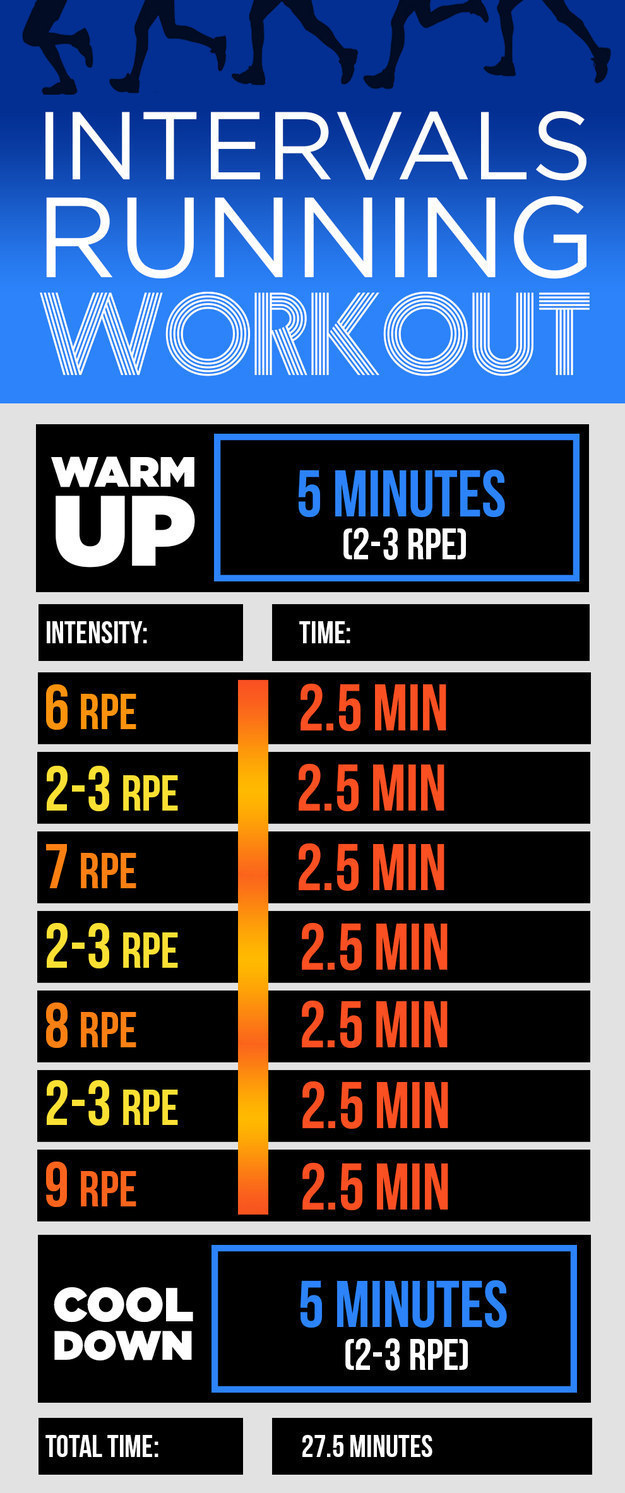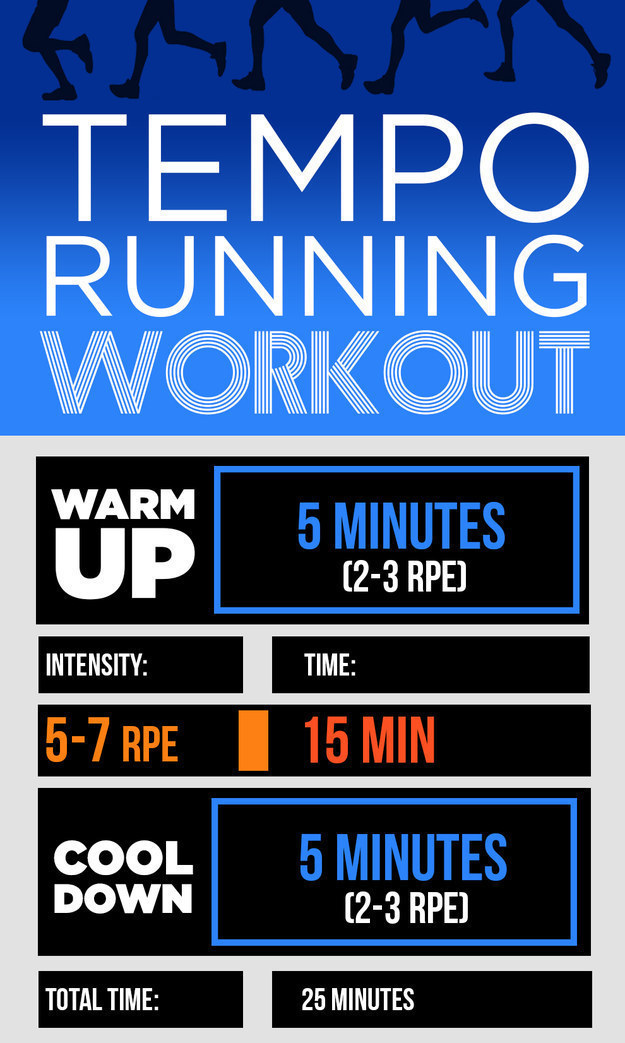
This 28-day challenge will get you into the habit of working out for 30 minutes a day, five times per week.
"Getting in shape" is a popular New Year's resolution, but it's important to have structure when working toward it — otherwise it can be too vague, too confusing, and too intimidating to know where to begin. So we asked personal trainer Rob Sulaver, C.S.C.S., founder of Bandana Training, to create a realistic month-long exercise plan for us.
Here's your calendar:

There are two kinds of workouts: strength-training workouts and running workouts. The strength-training workouts are all bodyweight workouts, meaning they are a series of moves that use only your body's weight as resistance, like pushups and lunges — no equipment. Running is...running. Bodyweight workout days are in red. Running workout days are in orange. And rest days are in yellow.
Stick with the program and it's going to make you feel like this:
9 things you should know before you start the challenge:
1. The plan is designed so that anyone can do it, no matter their fitness level or workout experience. Just be sure to read this whole list for some safety tips, and make modifications to the workouts if you need to.
2. Each week you'll have a combination of running workout days, strength-training workout days, and rest days. The exercise days will help you improve your cardiovascular fitness, endurance, and strength. The program will get more challenging as you progress and get fitter.
3. You can find a complete list of all the running workouts below. Click here for more detailed instructions on how to do the running workouts.
4. You can find a complete list of all the bodyweight workouts below, also. Click here for step-by-step instructions of each individual exercise move.
5. Rest is built into the program intentionally. It's crucial for recovery and progress. If you're too tired to complete a workout with good form, take additional rest. Light activity (like a gentle yoga class, a long walk, an easy swim, a leisurely bike ride, etc.) is always encouraged on rest days, but only if you're up for it.
6. You can jump into the challenge anytime. If you start after Jan. 4, just take any workouts you missed to the end of the month.
7. You can follow the program to the letter, but you can also move things around. You can swap one bodyweight workout for another, or move a rest day earlier or later in the week depending on how you're feeling.
8. If you're brand new to working out, scale back workouts as needed — seriously. Running coach Janet Hamilton (who created some of the running workouts) says that you shouldn't do hard running workouts until you already have a base of fitness (meaning, you're running for at least 30 minutes at a time, three to five days a week — without any injuries). If you're not there yet, definitely modify these workouts to make them easier (we give instructions for how to do that). Listen to your body and don't push yourself to the point that you get hurt. If you're just getting started, your goal should be to just get moving for 30 minutes at a time. If that means you need to walk for half (or more) of it, that's totally fine. As for the bodyweight workouts, ease into them slowly, monitoring your pace, effort, and quality of movement. Reduce reps if you need to, or modify the moves to make them less intense.
9. After the challenge is over, you'll want to keep going and it's super easy to do it. Try it again with some different bodyweight workouts, mix and match your own, or repeat this challenge with the goal of moving faster or better, or doing the harder versions of the workouts. As Sulaver says, "Go back through it and kick even MORE ass. It's like beating Super Mario Bros. and starting over on a harder setting."

These workouts were created by New York City-based trainer Albert Matheny, C.S.C.S., founder of Soho Strength Lab. They are all examples of high-intensity circuit training, which means that you push yourself incredibly hard for a short amount of time for a super effective workout. The most important thing is that you do all the moves with perfect form for every rep — you shouldn't be pushing yourself too hard that you can't do the moves right.
Total-Body Workout:
Strong Core Workout:
Upper-Body Workout:
Lower-Body Workout:
If you get bored with those four bodyweight workouts and want to change it up, there are five other bodyweight workouts you can swap in here.

These running workouts were created especially for BuzzFeed Life by two RRCA-certified professional coaches, Janet Hamilton and John Honerkamp, who have 45 years of coaching experience between them. Rather than tell you what treadmill setting to use, which would differ from person to person and doesn't apply to outdoor running, these workouts use a measure of intensity called RPE (rate of perceived exertion), which Honerkamp adapted for us. RPE works on a 10-point scale, where 1 is barely moving, 10 is all-out sprinting as fast as you can go, and 5 is running but at a moderate intensity pace — you can still carry on a conversation easily. This is a much healthier and smarter way to calculate your intensity than dialing up the treadmill.

Time Ladder:

Intervals:

Tempo:


